On this page
North American FaunaThis page lists publications in the North American Fauna series of monographs published by the U.S. Dept. of Agriculture, later by the Dept. Of The Interior, between 1889 and 2014.The first section of the page gives detailed information about bird related publications in the series. The second section of the page is a complete list of publications in the series. Both lists are ordered by publication data with the most recent at the top.
US Govt.There are currently two pages listing US government dept. publications:
Biological Services Bulletins
North American Fauna
|
|
|
|
Abundance and Distribution of Mangrove Landbirds in Florida
John D. Lloyd and Gary L. Slater
North American Fauna, Number 80
Fish And Wildlife Service
US Department Of The Interior
2014
From the abstract: Florida’s mangroves provide habitat for an eclectic mix of bird species, including five taxa rarely found elsewhere in North America. Little is known of the natural history of any of these birds, which poses an obstacle to effective conservation. To help fill some of the basic gaps in our understanding of this avifauna, we conducted extensive surveys in Florida’s mangroves during 2008–2011, with the goals of quantifying distribution and estimating breeding-season abundance of mangrove landbirds. We detected 80 species in the mangroves during the breeding season; most were species in Passeriformes ( n = 29), but other important taxa included Ciconiiformes ( n = 13) and Charadriiformes ( n = 12). We focused our analysis on the 18 landbird species (including members of Falconiformes, Columbiformes, Cuculiformes, Piciformes, and Passeriformes) that had . 90 detections and that were detected at . 5% of the survey points. The landbird avifauna of Florida’s mangroves is lower in both species richness and total number of individuals than other vegetation types of southern Florida.
|
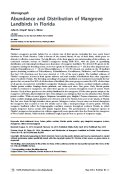
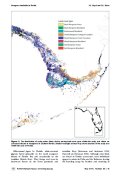 |
|
The North American Breeding Bird Survey 1966–2011: Summary Analysis and Species Accounts
John R. Sauer, William A. Link, Jane E. Fallon, Keith L. Pardieck, David J. Ziolkowski Jr
North American Fauna, Number 79
Fish And Wildlife Service
US Department Of The Interior
2013
From the abstract: The North American Breeding Bird Survey is a roadside, count-based survey conducted by volunteer observers. Begun in 1966, it now is a primary source of information on spatial and temporal patterns of population change for North American birds. We analyze population change for states, provinces, Bird Conservation Regions, and the entire survey within the contiguous United States and southern Canada for 426 species using a hierarchical log-linear model that controls for observer effects in counting. We also map relative abundance and population change for each species using a spatial smoothing of data at the scale of survey routes. We present results in accounts that describe major breeding habitats, migratory status, conservation status, and population trends for each species at several geographic scales. We also present composite results for groups of species categorized by habitats and migratory status. The survey varies greatly among species in percentage of species’ range covered and precision of results, but consistent patterns of decline occur among eastern forest, grassland, and aridland obligate birds while generalist bird species are increasing.
|
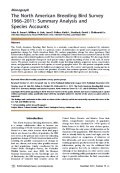
 |
|
Ecology of the Cooper's Hawk in North Florida
Brian A. Millsap, Timothy F. Breen and Laura M. Phillips
North American Fauna, Number 78
Fish And Wildlife Service
US Department Of The Interior
2013
From the abstract: We studied adult Cooper's hawks Accipiter cooperii on two study areas in north Florida from 1995 to 2001, an area dominated by large plantations managed for northern bobwhite Colinus virginianus and an area of mixed farmland and woods with no direct bobwhite management. We monitored 76 Cooper's hawk nesting attempts at 31 discrete nest areas, and radio-tagged 19 breeding males and 30 breeding females that we radio-tracked for up to 5 y. Nesting density (565 to 1,494 ha per occupied nest area) was comparable but productivity (1.8 and 2.8 young fledged per occupied and successful nest area, respectively) was lower than for the species elsewhere. Prey may have been more limiting than in other areas studied because chipmunks Tamias striatus , an important prey elsewhere, were absent. Annual Cooper's hawk survival averaged 84% for males and 81% for females, except in 1998 when survival was substantially lower.
|
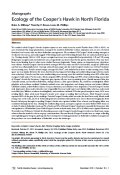
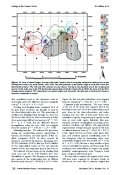 |
|
Birds Of The Kilbuck and Ahklun Mountain Region, Alaska
Margaret R. Petersen, Douglas N. Weir, Matthew H. Dick
North American Fauna, Number 76
Fish And Wildlife Service
US Department Of The Interior
1991
From the abstract: Between 1952 and 1988, we studied the abundance, distribution, occurrence, and habitats used by birds in the northwest portion of Bristol Bay and the adjacent Kilbuck and Ahklun mountains. In the 809 days we were present, we conducted 53 studies or surveys of birds in the region. We gathered information on 185 species, of which 65% (121) nested, 10% (19) probably nested, and 1 1% (21) were permanent residents in the region. Most breeding or probably breeding forms were of North American (58%; 81) or Beringian (24%; 33) affinity, while the remainder of the species were of Panboreal (17%; 24) and Old Worid (1%; 2) affinity. Similarly, most of the 44 migrants and visitants were of North American (4l%; 18) affinity, while the remainder were of Beringian (32%; 14) and Panboreal (27%; 12) affinity. Of the 140 species that nested or probably nested, 53% (73) were abundant to fairly common, 29% (40) were uncommon to very rare, and 20% (27) were localized. Shrub thicket, dwarf shrub mat, coniferous forest, deciduous forest, mixed deciduous-coniferous forest, and fluviatile water and shoreline habitats supported the greatest diversity of species breeding and suspected of breeding. The highest concentrations of birds occurred in the estuaries of Nanvak, Chagvan, and Goodnews bays during spring and fall migrations and on the coastal and island cliffs during the breeding season.
|
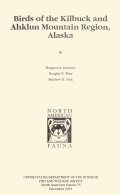
 |
|
Birds Of The St. Croix River: Valley Minnesota And Wisconsin
Craig A. Faanes
North American Fauna, Number 73
Fish And Wildlife Service
US Department Of The Interior
1981
From the abstract: The St. Croix River Valley encompasses nearly 11,550 km 2 in east-central Minnesota and northwestern Wisconsin. A wide range of habitats are available for birds including upland oak, lowland deciduous, maple-basswood, lowland and upland coniferous forests, natural basin wetlands, and grasslands. Situated in the north-central region of the United States, the valley is a biological crossroads for many species. Because of the mixed affinities of plant communities, the valley includes the northern and southern range limits for a number of species. Also, because the valley lies near the forest-prairie transition zone, many typical western breeding species (e.g. pintail, western meadowlark, yellow-headed blackbird) breed in proximity to typical eastern species such as tufted titmouse, eastern meadowlark, and cardinal. From 1966 to 1980, I conducted extensive surveys of avian distribution and abun- dance in the St. Croix River Valley. I have supplemented the results of these surveys with published and unpublished observations contributed by many ornithologists. These additional data include compilations from Christmas Bird Counts sponsored by the National Audubon Society and from the Breeding Bird Survey coordinated by the U.S. Fish and Wildlife Service. Three hundred fourteen species have been recorded in the study area; data are presented on the migration period, nesting season distri- bution, winter distribution, relative abundance, and habitat use of each species.
|

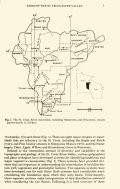 |
|
The Californian Condor: A Look At Its Past And FutureSanford R. Wilbur
North American Fauna, Number 72
Fish & Wildlife Service
US Department Of The Interior
1978
From the abstract: The California condor (Gymnogyps californianus) was studied on about 900 field days between 1966 and 1976. In addition, some 1,000 items of literature, specimen records from 56 museums, and 3,500 reports of condor sitings by cooperators were analyzed. Distribution does not appear to have changed significantly since the 1930's, although there are some areas within the species' range that have become unusable. Two subpopulations of condors exist, one occupying the Coast Range Mountains, and the other found in the Transverse Ranges, Tehachapi Mountains, and Sierra Nevadas. There are well-defined seasonal movements within each sub- population area. The surviving, wild population was estimated to be 45 condors in 1976, a decline of about 20% since 1965 and probably over 50% since 1940. No reliable population estimates are available before the 1940's, but it appears that a major decline occurred between 1880 and 1920. Shooting and specimen collecting were the primary causes of the early decline, and shooting continued as a major problem into the 1960's. Recent declines are a result of inadequate production; annual surveys indicate that only 16 young have been produced since 1968. Causes of low production are unknown but inadequate food supply, environmental contaminants, and disturbance from air traffic and petroleum extraction are implicated. A recovery plan for the condor is in operation; steps have been taken to supplement food supplies, preserve nesting and roosting habitat, and protect surviving birds from man-caused mortality or disturbance.
|
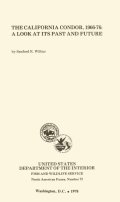
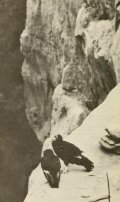
 |
|
The Screech Owl: Its Life History and Population Ecology in Northern Ohio
Laurel F. VanCamp and Charles J. Henny
North American Fauna, Number 71
Fish And Wildlife Service
US Department Of The Interior
1975
From the introduction: The screech owl (Otus asio) is native to North America and breeds throughout the United States and in portions of Canada and Mexico. It is a small owl, 20 cm (8 in) in length from the tip of the bill to the tip of the tail, with a wing span of 56 cm (22 in); it has yellow eyes and prominent ear tufts (see Frontispiece). Although the species is common throughout much of North America, it has not been studied intensively, particularly over a long period. The published literature is concerned mostly with food habits, color phase, taxonomy, and miscellaneous observations. Breeding biology and population dynamics have received little attention. This report presents the basic life history and population information about screech owls in northern Ohio over a 30-yr period. The owls studied were nesting in boxes (Fig. 1) established for wood ducks (Aix sponsa) along rivers, creeks, and marshes in a four-county area (Ottawa, Sandusky, Wood, and Lucas Counties) near Lake Erie (Fig. 2). No special trapping techniques were required as the screech owls readily used these nesting boxes and could be easily captured while in them. More than 3,000 owls were captured and banded; 500 were recaptured after the initial banding, some 10 or 15 times. This process provided a large quantity of basic information for this report.
|
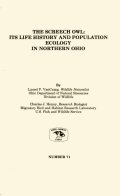
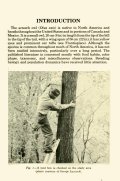
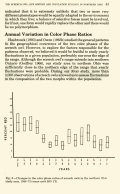 |
|
The Distribution And Occurrence Of The Birds Of Jackson County, Oregon, And Surrounding Area
M. Ralph Browning
North American Fauna, Number 70
Fish And Wildlife Service
US Department Of The Interior
1975
From the introduction: The distribution and occurrence of the Jackson County avifauna are of interest because the county is a small geographic area with numerous plant communities. In the Rogue River Valley, a large variety of breeding species similar to the avifauna of areas of California several hundred kilometers to the south was reported by Gabrielson (1931). Since then six papers (Stevenson and Fitch 1933; Richardson 1961; Richardson and Sturges 1964; and Browning 1966a; 1966b; 1972) have dealt with certain birds of specific areas of the county. Thomas McCamant compiled 10 years of field notes into, an unpublished checklist with specific data on his more significant observations from 1947-57. The University of Oregon Press printed a checklist, Birds of Southern Oregon, compiled at Southern Oregon College by Franklin W. Sturges.
|
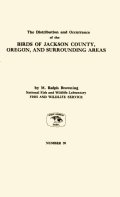
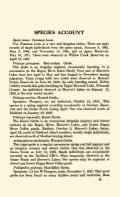 |
|
Natural History Of The Swainson's Warbler
Brooke Meanley
North American Fauna, Number 69
Bureau Of Sport Fisheries And Wildlife
US Department Of The Interior
1971
From the introduction: The Swainson's Warbler (Limnothlypis swainsonii) is one of the least known of songbirds in the southern United States and one that is widely sought by bird enthusiasts. It is unusually appealing to the student of birds because it is hard to find, because its forbidding habitat is challenging, and because it is associated with the Audubon-Bachman period of North American ornithology. The difficulty of becoming well acquainted with the Swainson's Warbler has been noted by a number of field ornithologists. In the Alabama River bottoms, Arthur H. Howell of the U.S. Biological Survey reported it as confined to the deep swamps and riverbottom woods where canebrakes occur, and re- marked that its secretive habits conceal it from all but the most persistent observers. In the big swamps above Mobile in May 1911, July 1913, and May 1914 he heard at least nine of these warblers, but because of the impenetrable vegetation was unable to collect any. Maurice G. Brooks, Professor of Wildlife Management at West Virginia University, and his coworker W. C. Legg found this elusive warbler extremely difficult to observe in the dense shadows of the "rhododendron hells" of the Alleghenies: With their neutral brown coloration, their rapid movements, and their ap- parent liking for the centers of the thickets, they seemed to blend imperceptibly into their surroundings.
|
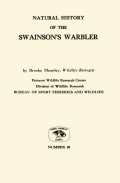
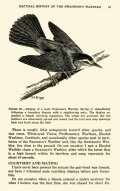
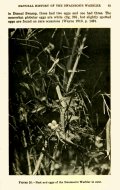 |
|
Natural History Of The King Rail
Brooke Meanley
B/W photographs, illustrations and maps
North American Fauna, Number 67
Bureau Of Sport Fisheries And Wildlife
US Department Of The Interior
1969
From the introduction: The King Rail {Ralius elegans Audubon), largest of North American rails, is indeed an elegant bird, as its Latin name implies. Its striking appearance (fig. 1), secretive nature, and association with a variety of wetland habitats make it a favorite of bird students and rail hunters. The King Rail is found in most of the eastern half of North America, from the Atlantic coast to the Great Plains and from the Gulf of Mexico to southern Canada. It is most abundant in the fresh and brackish tidal marshes of the Atlantic and Gulf Coastal Plain, the domestic ricefields of Arkansas, Louisiana, and Texas, and the marshes of southern Florida. It is fairly common in parts of the Midwest Prairie and Great Lakes region. I began my studies of this interesting bird in 1950 in the Arkansas ricefields, and have continued them until 1967, both in the field and in the laboratory. Many of the field observations, particularly those of courtship behavior, were made from an automobile which served as an admirable mobile blind. Such a blind was used to follow courting rails along roadside ditches in Arkansas and Louisiana, making it possible to study the detailed nuptial courtship behavior of 20 different pairs and the prenuptial behavior of four. Under these conditions it was possible also to distinguish the sexes by their behavior rather than by their size differences, which are sometimes difficult to ascertain in the field.
|
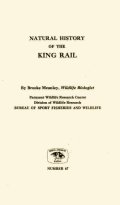
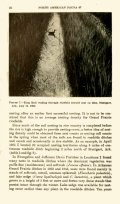
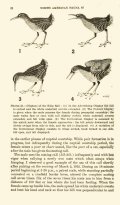 |
|
Seven New White-Winged Doves From Mexico, Central America, And The Southwestern United States
George B. Saunders
North American Fauna, Number 65
Bureau Of Sports Fisheries And Wildlife
US Department Of The Interior
1968
From the introduction: The present paper describes seven new subspecies. Apparently, ornithologists have assumed that asiatica is the resident form in much of Central America because their collections, made mostly in the autumn and winter months, include so many of this race; other white- wings have been lumped as asiatica with the observation that this race shows wide variation (Dickey and van Rossem, 1938; Griscom, 1932; and Ridgway, 1916) . While many asiatica winter as far south as Costa Rica, they do not breed in Central America (Saunders, 1959, 1962). It now appears that the race asiatica is much less variable in color and size than was formerly believed. My interest in this problem began in 1910 when some of the whitewing nestlings we banded in southern Texas in summer were reported during autumn and winter in Guatemala and El Salvador. In 1942 I visited these countries for the first time during winter and spring to study the numbers and distribution of these doves and the factors affecting them.
|
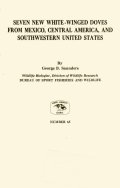
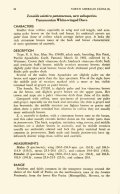 |
|
The Trumpeter Swan: Its History, Habits, And Population In The United States
William E. Banko
B/W photographs, illustrationa and maps
North American Fauna, Number 63
Fish And Wildlife Service
US Department Of The Interior
1960
From the foreword: The appeal of swans to man throughout history has come down to us in legend, custom and in many forms of art. That the world's largest species of this storied bird should have become nearly extinct in its native North America was thus especially tragic. The continuing recovery in numbers of this beautiful and graceful symbol of American wilderness is a major accomplishment in wildlife preservation. The establishment of the Red Rock Lakes Migratory Waterfowl Refuge was the climax of this effort in the United States, and any study of the trumpeter swan necessarily focuses on the Refuge and the adjoining country. In this magnificent mountainous setting a few of the swans had survived, and the remoteness of the country has made it possible to maintain the wilderness environment favored by the birds. The present United States population of trumpeters is found mainly in a 60-mile radius encompassing parts of southwestern Montana where the Refuge is found, eastern Idaho, and northwestern Wyoming, including Yellowstone National Park. This report on the trumpeter evolved from studies made from 1948 to 1957 when I served first as an assistant and later as manager, of the Red Rock Lakes Refuge. I have also drawn extensively on the records of the National Park Service, the U. S. Fish and Wildlife Service, and the National Museum in Washington, D. C. Other pertinent information bearing on the life history of the trumpeter swan in the United States has been extracted from published articles, unpublished reports and records, firsthand accounts and correspondence.
|
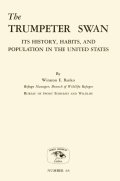

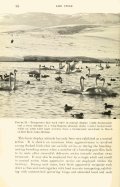 |
|
Birds Of Maryland And The District Of Columbia
Robert E. Stewart and Chandler S. Robbins
1 b/w plate: Louis Agassiz Fuertes
69 Distribution maps
North American Fauna, Number 62
Fish And Wildlife Service
US Department Of The Interior
1959
From the introduction: Birds hold an important position in our economy and culture, their recreational value is shared by the gunner, the photographer, and an increasing number of bird students who both singly and in organized parties take frequent trips to make Christmas-season or spring counts, to record the progress of migration, or to seek rare species. If the amount of money spent anually for such items as field clothes, gasoline, food, lodging, guns, shells, boats, binoculars, telescopes, cameras, film, and bridge tolls by persons in quest of birds for one purpose or another were known, the total would doubtless surprise even the most ardent participants. Aside from their recreational and direct economic value, birds have aesthetic appeal to most of our citizens. Countless thousands of people derive daily enjoyment from the sight of birds on their feeding shelves, in their birdbaths, or on their lawns, from hearing their varied songs, or from watching distant flocks of waterfowl by day or hearing their calls by night. The majestic Bald Eagle, which nests throughout our tidewater area, so inspired our ancestors that it was selected as our national emblem, frequent references to other birds in prose and poetry attest to the more subtle influences these creatures have upon our civilization.
|
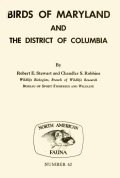

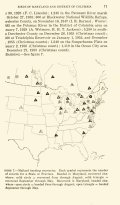 |
|
Fauna Of The Aleutian Islands And Alaska Peninsula
Olaus J. Murie
With Notes On Invertebrates And Fishes Collected In The Aleutians 1936-1938: Victor B. Scheffer
North American Fauna, Number 61
Fish And Wildlife Service
US Department Of The Interior
1959
From the foreword: This report is based on a biological survey of most of the Aleutian Islands and the Alaska Peninsula in 1936 and 1937. The report was largely prepared soon after the survey, but for various reasons it has not been practical to publish it until now. Even in manuscript form, this material has been consulted frequently, and it is issued now in the North American Fauna series so as to make more accessible information on one of North America's most significant biogeographic regions. While the report was being readied for publication, the fifth edition of the Check-List of North American Birds appeared (American Ornithologists' Union 1957). Throughout the report, scientific and common names of birds have been made to conform to the new Check-List, but generally references to "the A. 0. U. Check-List," without specification, are to the fourth (1931) edition. Scientific names of mammals have been made to conform in general to the List of North American Recent Mammals (Miller and Kellogg 1955); common names of mammals for the most part follow Hall (1957). The Pinnipeds conform to the nomenclature of Scheffer (1958).
|
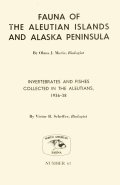
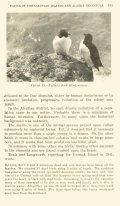 |
|
Habits, Food, And Economic Status Of The Band-Tailed Pigeon
Johnson A. Neff
North American Fauna, Number 58
Fish And Wildlife Service
US Department Of The Interior
1947
From the abstract: Information is compiled for use in conserving and managing the band-tailed pigeon, largest native member of the family Columbidae in the United States. The report deals with the discovery of the bird and its appearance, distribution, migration, life history, nesting, habits, and game status, and contains a discussion of factors governing its abundance. Original information is presented on food habits, based on the laboratory analyses of 691 stomachs and/or crops of these birds. Mast (acorns and pine nuts) was found in 268 of the specimens and constituted 50.1 percent of the annual food. The availability of mast for food largely determines the migration routes and wintering habitat, and indirectly determines the nature and extent of damage inflicted by these birds upon crops. The fondness of the band-tail for cultivated cherries and small green prunes forms the basis for many agricultural com- plaints. These fruits were found in 98 birds and made up 11 percent of the diet. Other fruits tff the rose family taken by the birds included those of blackberry, salmonberry, serviceberry, toyon, and hawthorn, together making up 13.6 percent of the annual food.
|
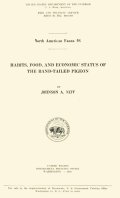
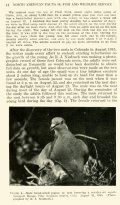 |
|
Attwater's Prairie Chicken: Its Life History And Management
Valgene W. Lehmann
1 color plate: Allan Brooks
North American Fauna, Number 57
Fish And Wildlife Service
US Department Of The Interior
1941
From the abstract: Attwater's Prairie Chicken, a characteristic bird of the Texas coastal prairie, is closely related to the now extinct heath-hen of northeastern North America. Once abundant in an area extending from the coastal tall-grass prairies of southwestern Louisiana and Texas west and south to near Port Isabel, it has decreased in numbers as man has exploited its habitat, until now it is threatened with the same fate as that of the heath-hen. Important factors limiting the numbers of the bird include excessive or persistent rainfall during the nesting season, heavy grazing, excessive pasture burning, agricultural operations, and overshooting. Management will usually involve protection from excessive killing, improvement of food and cover, and control of predators and of the kill by hunters. Responsibility for this rests with the landowner. Optimum prairie chicken range apparently consists of well-drained grassland, with some weeds or shrubs, the cover varying in density from light to heavy; and with surface water available in summer; diversification within the grassland type is essential. In the absence of ample refuges for the species, probably all other favorable factors together will fail to save Attwater's prairie chicken from extinction.
|
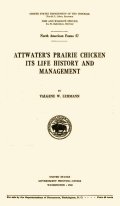
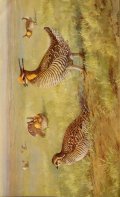 |
|
A Biological Survey Of The Pribilof Islands, Alaska
Birds And Mammals: Edward A. Prebble, W.L. McAtee
Insects, Arachnids and Chilopods: Various Entomologists
North American Fauna, Number 46
Division of Biological Survey
US Department Of Agriculture
1923
From the introduction: This report treats of the birds and mammals of the group, together with the insects and related invertebrates, and the life-zone relationships of the region. The Pribilof Islands constitute a national reservation and are especially noteworthy as being the sole breeding place of the largest herds of fur seals in the world, which are the property of the United States Government and are managed by the Bureau of Fisheries of the Department of Commerce. Numbers of valuable blue foxes, which by selective breeding under normal conditions have been developed to a point of excellence nowhere else attained, are also found on the islands, as well as two herds of reindeer. The present report will be of great assistance to students and others interested in the natural history of Alaska.
|
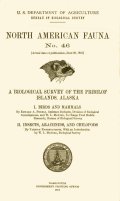
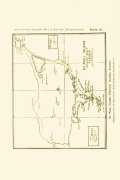 |
|
Natural History Of The Queen Charlotte Islands, British Columbia
Natural History Of The Cook Inlet Region, Alaska
Wilfred H. Osgood
North American Fauna, Number 21
Division of Biological Survey
US Department Of Agriculture
1901
From the introduction: The Queen Charlotte Islands lie off the coast of British Columbia, just south of the Alaskan boundary, between latitude 51 55' N. and 54 l5' N. They are slightly farther from the mainland than any of the islands of the Alexander Archipelago, to the north of them, and are not in the track of regular coasting steamers. They were visited by several of the early navigators of the northwest coast, but until 1787 no name was given them and no account of them had been pub- lished. In this year Capt. George Dixon cruised about the islands from July 1 to August 3, trading with the natives and roughly charting the coast. He named the group after Queen Charlotte, the consort of George III of England, and in the report of his voyage which appeared later included a very interesting account of his visit, together with maps and illustrations. In the early part of the nineteenth century various fur-trading vessels stopped frequently at the Queen Charlottes, and later the discovery of gold and coal in small quantities has caused sporadic invasions by prospectors. No important attempt has been made, however, to develop the resources of the islands.
|
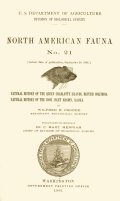
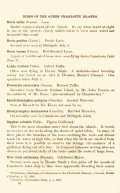 |
|
Results Of A Biological Reconnaissance Of The Yukon River Region
General Account Of The Region
Annotated List Of Mammals: Wilfred H. Osgood
Annotated List Of Birds: Louis B. Bishop
North American Fauna, Number 19
Division of Biological Survey
US Department Of Agriculture
1900
From the introduction: Nowhere else in North America is such a vast extent of boreal country so easily accessible as along the Yukon. The navigable waters of the river begin at Lake Bennett, only 35 miles from the port of Skagway. on the coast of southeast Alaska, and with but one short interruption, extend northward as far as the Arctic Circle and then westward to Bering Sea; in all, a distance of more than 1,800 miles. The recent developments resulting from the discovery of gold in this region include a modern railroad from Skagway to Bennett and a tramcar service around the dangerous White Horse Rapids. The chief obstacles to ready access to the territory have thus been removed, and an opportunity is afforded for obtaining specimens and information from a region much of which was previously unknown to naturalists. Accordingly, with Dr. Louis B. Bishop as voluntary companion and A. G. Maddren as assistant, I was detailed to make a hasty biological reconnoissance of this region during the summer of 1899.
|

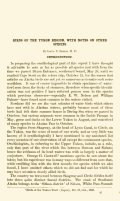 |
|
Results Of A Biological Survey Of Mount Shasta, California
C. Hart Merriam
B/W plates: L.A. Fuertes, Ernest S. Thompson and others
B/W photographs
North American Fauna, Number 16
Division Of Biological Survey
US Department Of Agriculture
1899
Includes a 26 page section on the birds of Mount Shasta.
From the introduction: At the close of the field season of 1897 the Biological Survey had nearly completed a reconnaissance of Washington and Oregon, and in previous years had carried its operations over extensive tracts in southern, middle, and northeastern California, so that with the exception of a rather large area in northern California fully two-thirds of the Pacific States had been covered. In 1898, therefore, the unworked part of northern California, reaching from the Madeline Plains on the east to the Pacific Ocean on the west, and from the Oregon boundary on the north to Lassen Butte and adjacent parts of the Sierra on the south, came to be the principal field of our investigations. In this area Mount Shasta occupies a nearly central position. All high mountains, particularly those that stand alone, are likely to throw light on the problems of geographic distribution and are worthy of careful study. Shasta, not only because of its great altitude, but even more because of its intermediate position between the Sierra and the Cascades, promised an instructive lesson, and was therefore chosen as a base station for part of the field work of 1898.
|

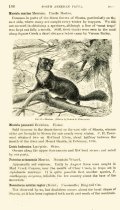
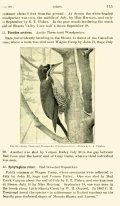 |
|
The Death Valley Expeditions, Part II: A Biological Survey Of Parts Of California, Nevada, Arizona, And Utah
1. Report on Birds, A. K. Fisher
2. Report on Reptiles and Batrachians, Leonhard Stejneger
3. Report on Fishes, Charles H. Gilbert
4. Report on Insects, C. V. Riley
5. Report on Mollusks, R. E. C. Stearns
6. Report on Desert Trees and Shrubs, C. Hart Merriam
7. Report on Desert Cactuses and Yuccas, C. Hart Merriam
8. List of Localities, T. S. Palmer
North American Fauna, Number 7
Division Of Ornithology And Mammology
US Department Of Agriculture
1893
Includes 151 page section on birds.
|

|
|
Results Of A Biological Reconnoissance Of South-Central Idaho
1. General Results
2. Annotated List of Mammals, With Descriptions Of New Species
3. Annotated List of Birds, With Description Of A New Owl: Dr. C. Hart Meriiam
4. Annotated List of Reptiles and Batrachians: Dr. Leonhart Stejneger
Descriptions Of A New Genus And Two New Species Of North American Mammals: Dr. C. Hart Meriiam
Color frontispiece: J.L. Ridgway
North American Fauna, Number 5
Division Of Ornithology And Mammology
US Department Of Agriculture
1891
Includes 28 page annotated list of birds.
|

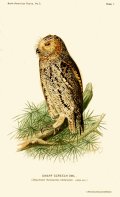
|
|
|
Complete list of publications in the North American Fauna series
| |
80. Abundance and Distribution of Mangrove Landbirds in Florida, John D. Lloyd and Gary L. Slater, 2014
79. The North American Breeding Bird Survey 1966–2011: Summary Analysis and Species Accounts, Various authors, 2013
78. Ecology of the Cooper's Hawk in North Florida, Brian A. Millsap, Timothy F. Breen and Laura M. Phillips, 2013
77. An Account of the Taxonomy of North American Wolves From Morphological and Genetic Analyses, Steven M. Chambers,* Steven R. Fain, Bud Fazio, Michael Amaral, 2012
76. Birds Of The Kilbuck and Ahklun Mountain Region, Alaska, Margaret R. Petersen, Douglas N. Weir, Matthew H. Dick, 1991
75. Mammals Of The La Selva-Braulio Carrillo Complex, Costa Rica, Various authors, 1989
74. Ecology And Biology Of The Pacific Walrus, Odobenus rosmarus divergens Illiger, Francis H. Fay, 1982
73. Birds Of The St. Croix River: Valley Minnesota And Wisconsin, Craig A. Faanes, 1981
72. The California Condor, 1966-76: A Look At Its Past And Future, Sanford R. Wilbur, 1978
71. The Screech Owl: Its Life History and Population Ecology in Northern Ohio, L. F. VanCamp and C. J. Henny. 1975. 65 pp.
70. The Distribution and Occurence of the Birds of Jackson County, Oregon, and Surrounding Areas, by M. Ralph Browning. 1975. 69 pp.
69. Natural History of the Swainson's Warbler. 1971. 90 pp.
68. The Sea Otter in the Eastern Pacific Ocean, by Karl W. Kenyon. 1970. 352 pp.
67. Natural History of the King Rail, by Brooke Meanley, 1969. 108 pp.
66. Mammals of Maryland, by John L. Paradiso. 1969. 193 pp.
65. Seven New White-winged Doves from Mexico, Central America, and Southwestern United States, George B. Saunders, 1968
64. Pelage and Surface Topography of the Northern Fur Seal, Victor B. Scheffer, 1961
63. The Trumpeter Swan; Its history, habits, and population in the United States, Winston E. Banko, 1960
62. Birds of Maryland and the District of Columbia, Robert E. Stewart and Chandler S. Robbins. 1958
61. Fauna of the Aleutian Islands and Alaska Peninsula, Olaus J. Murie, 1959
60. Raccoons of North and Middle America, Edward A. Goldman, 1950
59. The Pocket Gophers (Genus Thomomys) Of Arizona, Edward A. Goldman, 1947
58. Habits, Food, And Economic Status Of The Band-Tailed Pigeon, Johnson A. Neff, 1947
57. Attwater's Prairie Chicken: Its Life History And Management, Valgene W. Lehmann, 1941
56. Revision Of The North American Ground Squirrels, ARthur H. Howell, 1938
55. The Mammals And Life Zones Of oregon, Vernon Bailey, 1936
54. Alaska-Yukon Caribou, Olaus J. Murie, 1935
53. Mammals Of New Mexico, Vernon Bailey, 1931
52. Revision Of The American Chipmunks (Genera Tamias and Eutamias), Arthur H. Howell, 1929
51. A Taxonomic Review Of The American Long-Tailed Shrews (Genera Sorex and Microsorex), Hartley H. T. Jackson, 1928
50. Revision Of The American Lemming Mice (Genus Synaptomys), A. Brazier Howell, 1927
49. A Biological Survey Of North Dakota. I. Physiography And Life Zones, II The Mammals, Vernon Bailey, 1926
48. Voles Of The Genus Phenacomys. I. Revision Of The Genus Phenacomys, II. Life History Of The Red Tree Mouse (Phenacomys longicaudus), A. Brazier Howell, 1926
47. Revision Of The American Pikas (Genus Ochotna), Arthur H. Howell, 1924
46. A Biological Survey Of The Pribilof Islands, Alaska, Edward A. Prebble, W. L. McAtee and others, 1923
45. A Biological Survey Of Alabama. I. Physiography And Life Zones, II The Mammals, Arthur H. Howell, 1921
44. Revision Of The American Flying Squirrels, Arthur H. Howell, 1918
43. The Rice Rats Of North America (Genus Oryzomys), Edward A. Goldman, 1918
42. Life Zone Investigations In Wyoming, Merritt Cary, 1917
41. Review Of The Grizzly And Big Brown Bears Of North America (Genus Ursus), C. Hart Merriam, 1918
40. A Systematic Acount Of The Prairie-Dogs, N. Hollister, 1916
39. Revision Of The Pocket Gophers Of The Genus Thomomys, Vernon Bailey, 1915
38. A Review Of The American Moles, Hartley H. T. Jackson, 1915
37. Revision Of The American Marmots, Arthur H. Howell, 1915
36. Revision Of The American Harvest Mice (Genus Reithrodontomys), Arthur H. Howell, 1914
35. Life Zones And Crop Zones Of new Mexico, Vernon Bailey, 1913
34. Revision Of The Spiny Pocket Mice, Edward A. Goldman, 1911
33. A Biological Survey Of Colorado, Merritt Cary, 1911
32. A Systematic Synopsis Of The Muskrats, N. Hollister, 1911
31. Revision Of The Wood Rats Of The Genus Neotoma, Edward A. Goldman, 1910
30. Biological Investigations In Alaska And Yukon Territory, Wilfred H. Osgood, 1909
29. The Rabbits Of North America, E. W. Nelson, 1909
28. Revision Of The Mice Of The American Genus Peromyscus, Wilfred H. Osgood, 1909
27. A Biological Investigation Of The Athabaska-Mackenzie Region, Edward A. Preble, 1908
26. Revision Of The Skunks Of The Genus Spilogale, Arthur H. Howell, 1906
25. Biological Survey Of texas, Vernon Bailey, 1905
24. A Biological Reconnaisance Of The Base Of The Alaska Peninsula, Wilfred H. Osgood, 1904
23. Index Generum Mamalium:A List Of The Genera And Families Of mammals, T. S. Palmer, 1904
22. A Biological Investigation Of The Hudson Bay Region, Edward A. Preble, 1902
21. Natural History Of The Queen Charlotte Islands, British Columbia / Natural History Of The Cook Inlet Region, Alaska, Wilfred H. Osgood, 1901
20. Revision Of The Skunks Of The Genus Chincha, Arthur H. Howell, 1901
19. Results Of A Biological Reconnaissance Of The Yukon River Region, Wilfred H. Osgood & Louis B. Bishop, 1900
18. Revision Of The Pocket Mice Of The Genus Perognathus, Wilfred H. Osgood, 1900
17. Revision Of The American Voles Of The Genus Microtus, Vernon Bailey, 1900
16. Results Of A Biological Survey Of Mount Shasta, California, C. Hart Merriam, 1899
15. Revision Of The Jumping Mice Of The Genus Zapus, Edward A. Prebble, 1899
14. Natural History Of The Tres Marias Islands, Mexico, Various Authors, 1899
13. Revision Of The North American Bats Of The Family Vespertilionidae, Gerrit S. Miller, 1897
12. Genera And Subgenera Of Voles And Lemmings, Gerrit S. Miller, 1896
11. Synopsis Of The Weasels Of North America, Dr C. Hart Merriam, 1896
10. The Shrews Of North America, Dr C. Hart Merriam and Gerrit S. Miller, 1895
8. Monographic Revision Of The Pocket Gophers, Family Geomyidae, Dr C. Hart Merriam, 1895
7. The Death Valley Expeditions, Part II, Various Authors, 1893
5. Results Of A Biological Reconnoissance Of South-Central Idaho, Various authors, 1891
4. Descriptions Of Twenty Six New Species Of North American Mammals, Dr. C. Hart Merriam, 1890
3. Results Of A Biological Survey Of The San Francisco Mountain Region And Desert Of the Little Colorado, Arizona, Dr. C. Hart Merriam and Dr. Leonhard Stejneger, 1890
2. Descriptions Of Fourteen New Species And One New Genus Of North American Mammals, Dr. C. Hart Merriam, 1889
1. Revision Of The North American Pocket Mice, Dr. C. Hart Merriam, 1889
|
|